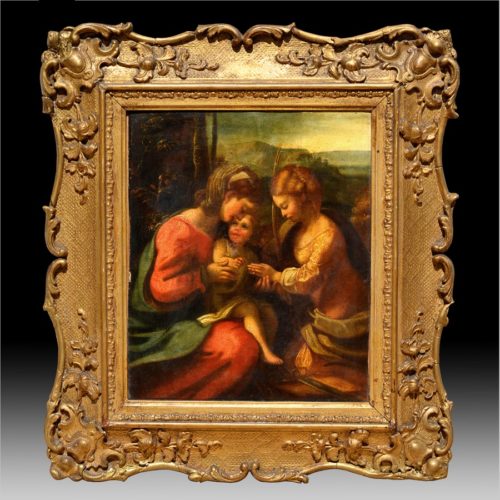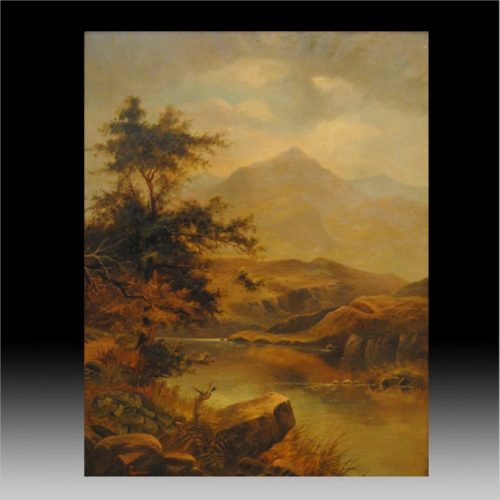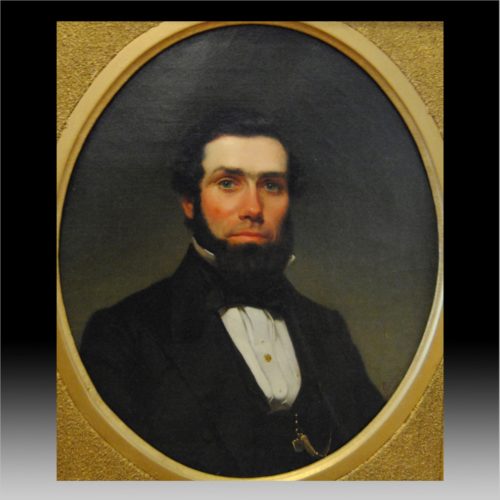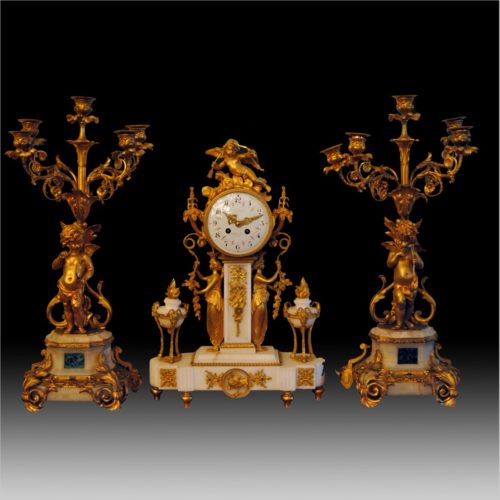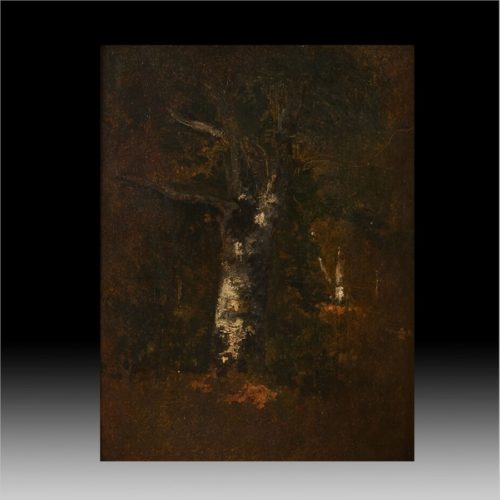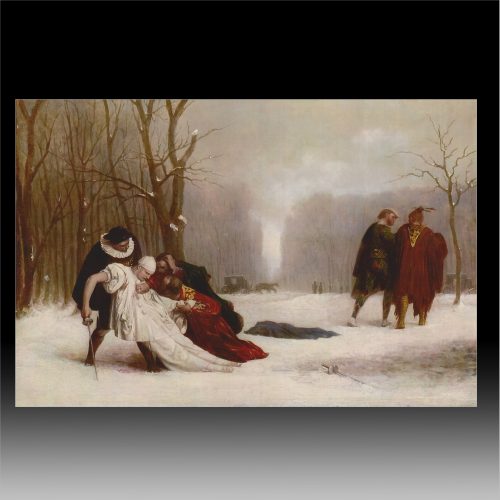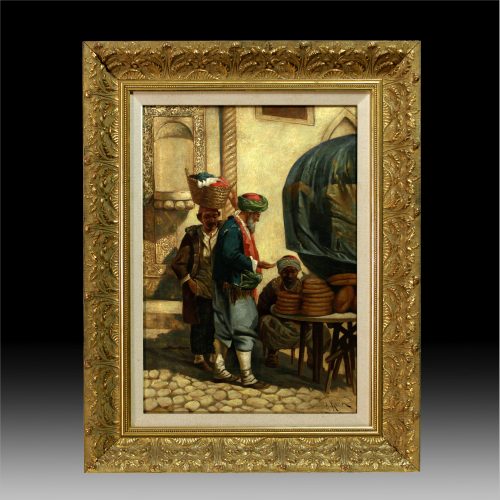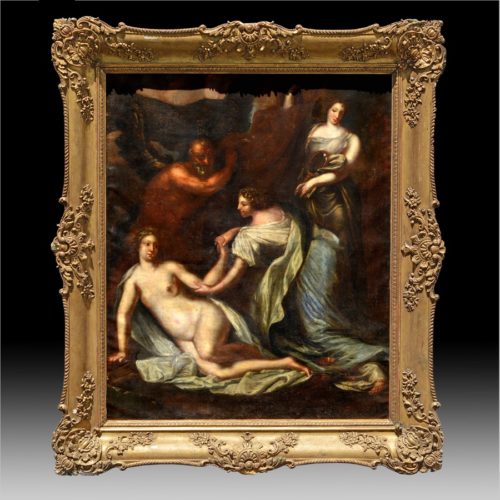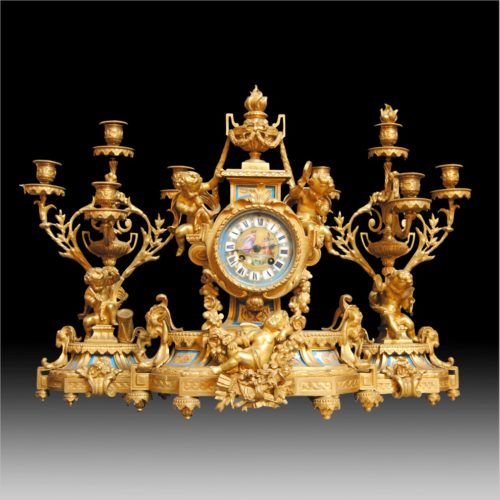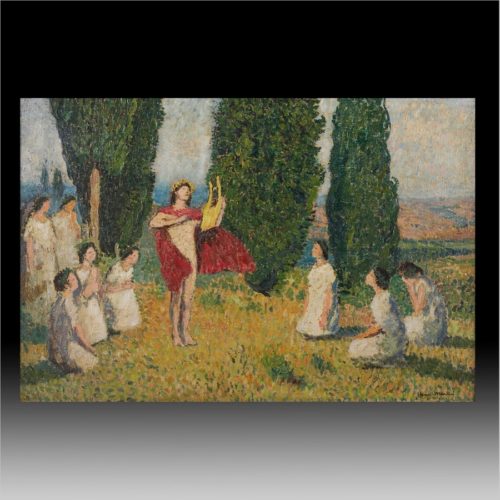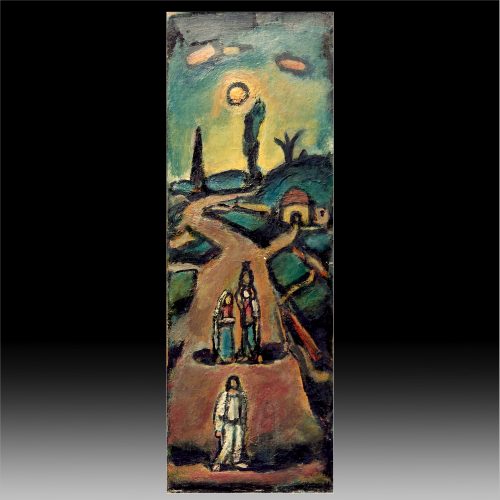-
D. Lawrence R.A. “Lake” Oil on canvas 35” x 28 ½” Signed @AC-NB
-
John George Brown 1831-1913 Portrait of a Man Oil on canvas 10 ½” x 12 ½” AC12000 AC28000 @AC-NB
-
CLOCK (F-785): A Louis XVI Style Ormolu-mounted Carrara Marble Mantel Clock, circa 1890. The circular enamel dial surmounted by a cloud borne Cupid, on rectangular pedestal flanked by classically-draped caryatids issuing scrolling and fruiting foliage, above a shaped rectangular plinth mounted with -urn en flambeau finials supported on triple ram’s head monopodiae and inset to the front with a cockerel, on toupie feet, the dial inscribed […]/240 RUE RIVOLI/A PARIS 21 ¼ inches Candelabra: A Pair of Gilt-Bronze and Onyx Candelabra. Each base has malachite square on the front and Putto holding a Five-Light branch stem. Height: 23 inches. (AC10000) CNYAPR2401-121 AC19740 F-785 / F-64
-
Narcisse Virgilio Díaz de la Peña (French, 1807-1876) “La foret” oil on canvas 18’’x 12’’
-
After Jean Leon Gerome (French, 1824-1904) Sortie du Bal Masque Oil on panel. 9 x 13 ¼ in. (23 x 32.5 cm)
-
Aleksei Mikhailovich Korin (Russian, 1865-1923 The bread seller oil on canvas
-
Carlo (Vavaliere) Maratta (Italian, 1625-1713) “Time Revealing Truth and Justice” Oil on canvas 53 x 43 ½ inches (134.6 x 110.5 cm) CL102794-128 3108801-2 NB-1040 #49
-
A French Ormolu and Gilt-Bronze Clock Garniture. Sevres-style painted dial with classic scene signed HUDESINE/ de Bronzes /RUE TURENNE 64 Paris Clock Dimensions: Height 17 ½ inches, Width 12 ¾ inches, and 6 ½ inches deep. Candelabra Dimensions: Height: 17 ½ inches, with 5 lights. F-147
-
Henri Martin (French, 1860-1943) “Orphee” Oil on canvas 21 ¼” x 32” Signed lower right COA by David Roy Henri-Jean Guillaume Martin (5 August 1860 – 12 November 1943) was a renowned French impressionist painter. Born in Toulouse to a French cabinet maker and a mother of Italian descent, Martin successfully persuaded his father to permit him to become an artist. He began his career in 1877 at the Toulouse School of the Fine Arts, where he was under the tutelage of Jules Garipuy (he was also a pupil of Henry-Eugéne Delacroix). In 1879, Martin relocated to Paris and with the help of a scholarship, was able to study in Jean-Paul Laurens' studio. Four years later, he received his first medal at the Paris Salon, where he would hold his first exhibition three years later in 1886. The year after he won his first medal, Martin was awarded a scholarship for a tour in Italy, where he studied the work of veterans such as Giotto and Masaccio. His 1889 canvas submission to the Salon earned him the gold medal for work that has been described as Pointillist. That same year he became a member of the Legion of Honour. At the 1900 World Fair, he was awarded the Grand Prize for his work. During this period, he became friends with Auguste Rodin. Although Martin's work as a neo-impressionist is not considered groundbreaking, his work was rather well-received, and has been associated with world-class symbolist painter, Puvis de Chavannes. Due to his introverted temperament, Martin decided to move away from Paris. After a decade of searching for an ideal home, Martin bought Marquayrol, a mansion overlooking La Bastide du Vert, near Cahors. He performed his best work in the new tranquil environment, and died there in 1943. Martin also taught; among his pupils was the American painter Nellie Ellen Shepherd.
-
George Rouault (French, 1871-1958) “La Route” Oil on cradled board 29 ½”x 10 ¼” Signed, also titled on the reverse Painted in 1947 COA by I. Rouault LITERATURE: P. Couthion, 1961, #439, illustrated p. 445 I. Rouault and B. Dorival, Vol. 2, 1988, #2369, p. 236

